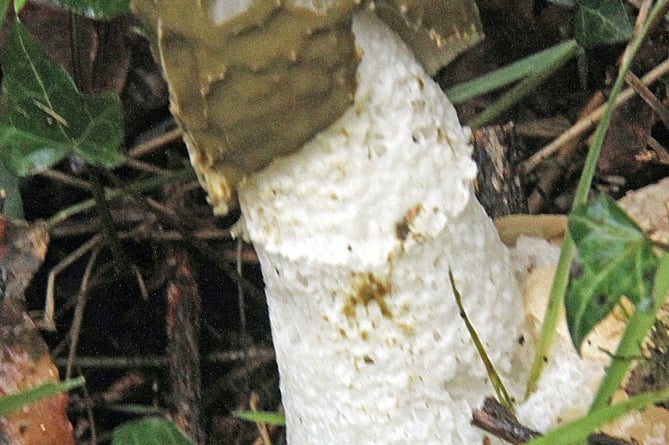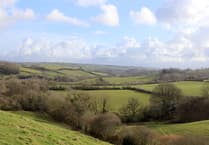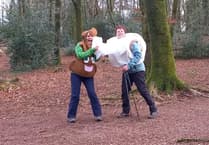I decided to take my first long walk of the New Year down to Trehunist and then down the hill to cross the ford before arriving at Hepwell Bridge.
Then I had to climb the long hill up to the village. About four miles I reckoned but it felt like 14 by the time I arrived home.
As I approached Trehunist, there were literally thousands of Navelwort, or Wall Pennywort as it is also called, with their leaves covering the hedgerows.
They were growing on the earthy parts of the hedge and across the stony parts, and during June to August they send up long stems that will carry numerous pendulous white flowers.
The plant’s common names refer to their leaves that have a navel-like dimple in the centre and are round, just like the old, large penny coin.
The very similar looking Marsh pennywort can be seen on marshy and boggy areas near water.
Their leaves were once thought to cause liver rot in sheep, giving it the name Sheep rot.
Walking down towards the ford, I spotted some primrose flowers on the south-facing hedge. They looked a treat but that group of blooms were the only ones I saw on my walk.
There were several dead twigs and branches on the hedges that were covered with Monk’s-hood lichen.
This is nature’s way of adding some green colour to the hedgerows after the wood has died off, usually because it has been cut off from their roots by a hedge trimmer.
When I got to the ford, I was grateful for the large, granite stone that served as a bridge as there was at least a couple of inches of stream water rushing across the road, more than enough to get my feet wet. This stream runs from an old quarry near Quethiock village down to join the River Tiddy.
On the way up the hill towards the village, the branches of Hazel already had their catkins, but it will be many weeks before these ‘lambs’ tails’ grow long and start to distribute their pollen.
I turned right whilst going uphill, to travel up the aptly named Muddy Lane which led to Hepwell Farm, and halfway up I smelt something rotten or dead and I thought it would be a dead rabbit or rat, but then I noticed something white in among the brambles.
I was very surprised to see that it was a Stinkhorn fungus that was causing the foul odour.
When this fungus first appears, it is in the shape of a ball that, if cut, takes on the appearance of a hard-boiled egg. Then a thick white stem grows out from the ‘egg’ and is topped with a green, slimy, bell-shaped head that emits a very strong aroma of rotten, putrid meat which, of course, attracts numerous flies.
I would say that this particular fungus had been on the hedge for more than a month as it looked ready to collapse.




